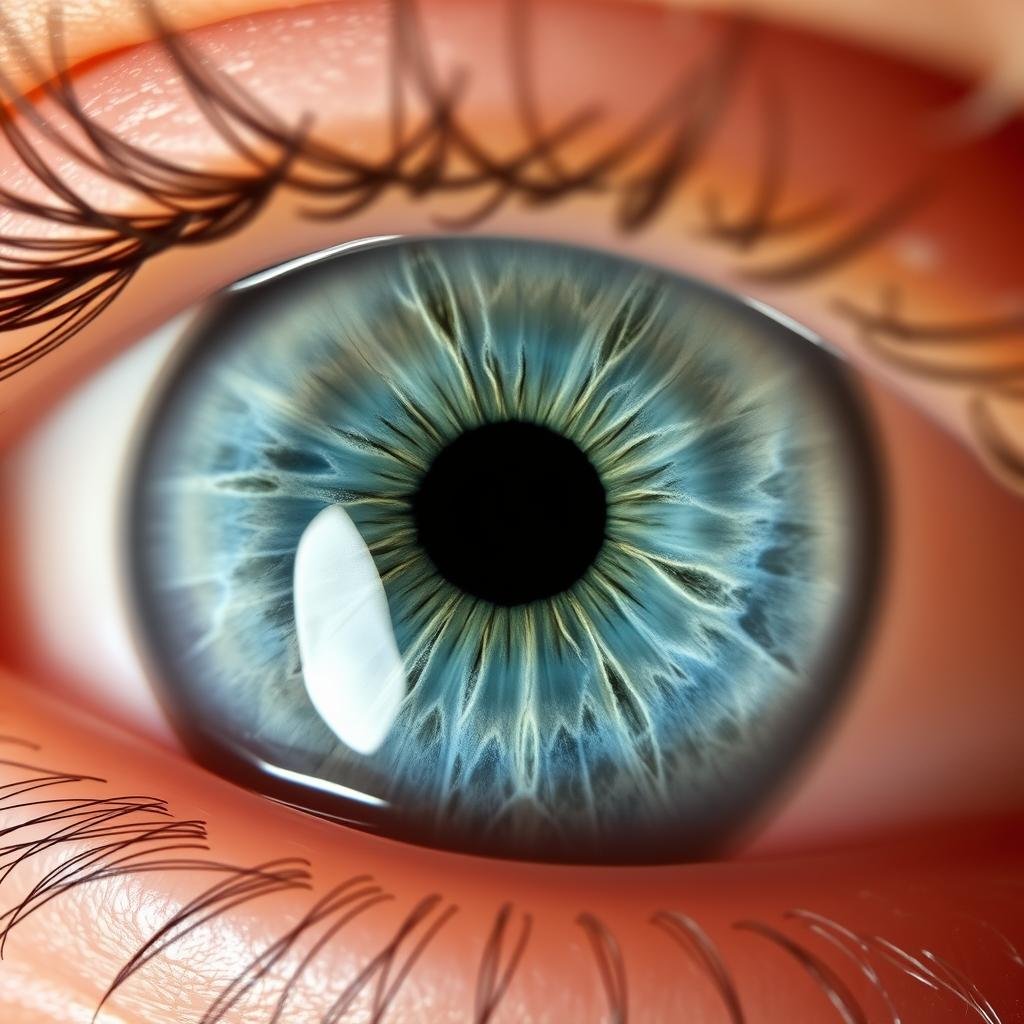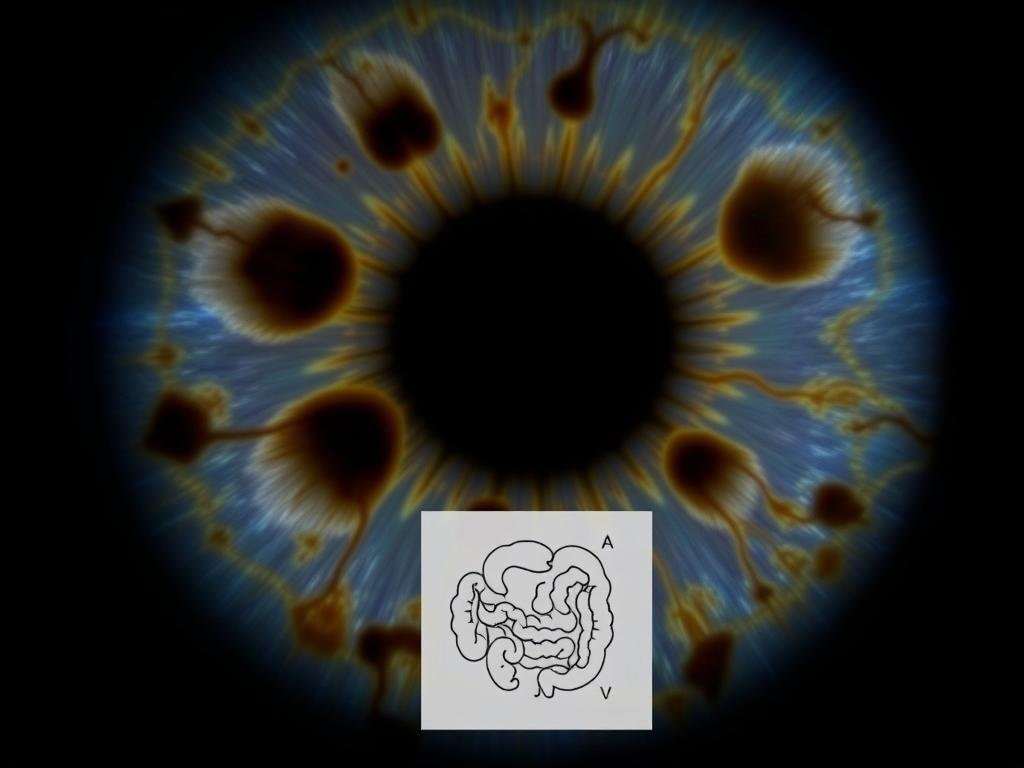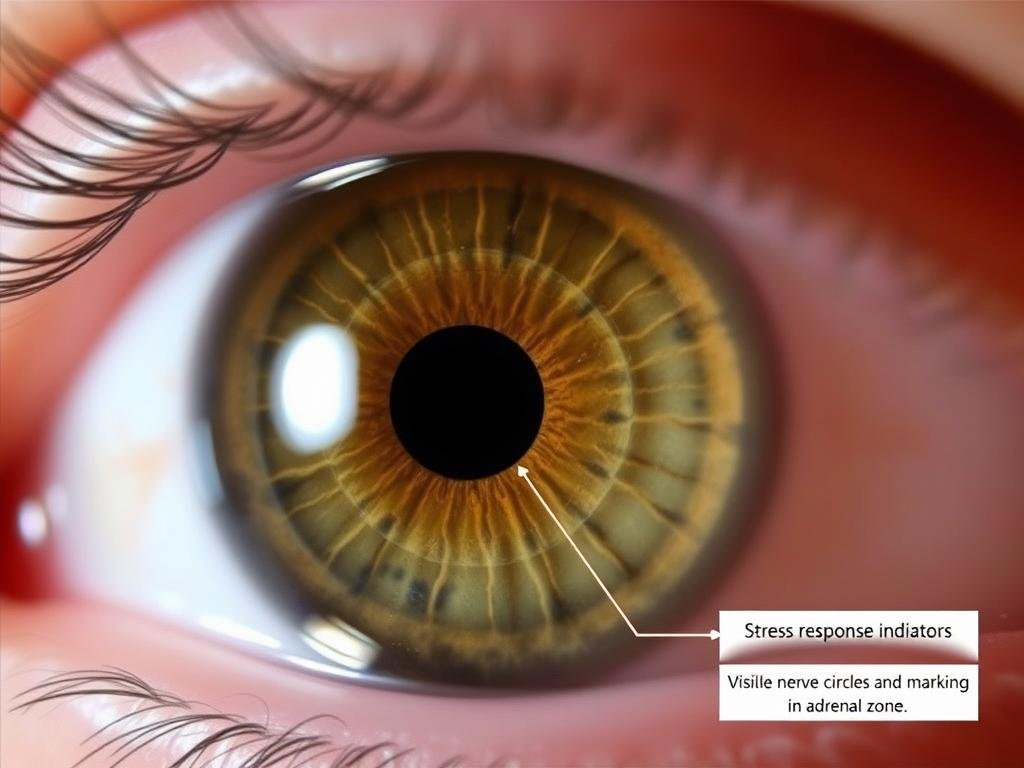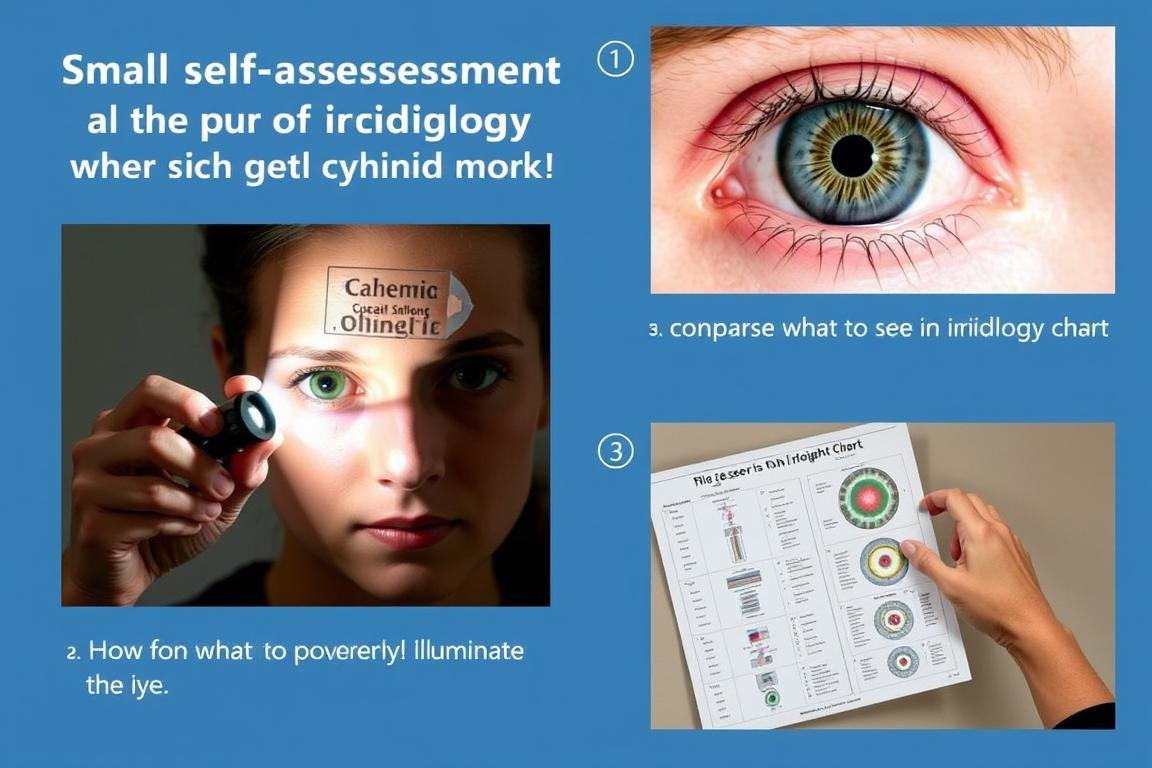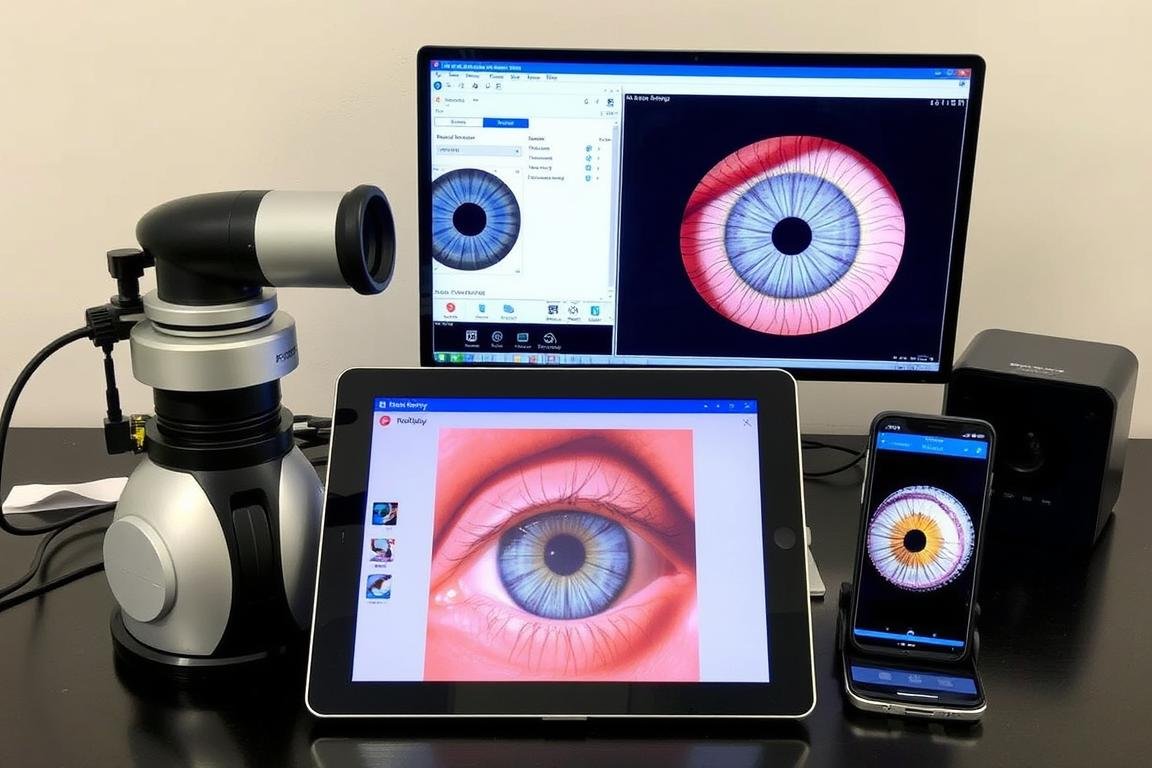L'ancienne pratique de iridologie—studying the iris to assess health conditions—has fascinated holistic practitioners for centuries. Understanding the distinct characteristics of the tableau d'iridologie oeil droit compared to its left counterpart is crucial for accurate health assessment. The iris, that colored part of your eye, contains intricate patterns that many believe correspond to different organs and systems throughout the body. These patterns differ significantly between your right and left eyes, each telling its own unique story about your health.
In this comprehensive guide, we’ll explore the fundamental differences between right and left eye iridology charts, decode their unique zones, and provide practical applications for using these differences in health assessment. Whether you’re a holistic health practitioner or simply curious about alternative health approaches, understanding these distinctions can enhance your iridology practice.



Understanding Charge iridologique Eye droit Fundamentals
Comprehensive tableau d'iridologie oeil droit with color-coded zones corresponding to body systems
Le tableau d'iridologie oeil droit serves as a map that divides the iris into multiple sections, each linked to specific organs and systems primarily on the right side of the body. According to iridology principles, the right iris has a stronger connection to the right side of your body, including the right lung, right kidney, and right portions of paired organs.
Basic Principles of Charge iridologique Eye droit Mapping
The right eye iridology chart follows a clock-like arrangement, with the pupil at the center. Each section radiates outward from this central point, creating zones that correspond to different body systems. The chart typically divides the iris into 12 clock positions, similar to a clock face, with each position relating to specific organs or body systems.
Right Eye Zones Overview
- Top Region (11-1 o’clock): Brain, head, and sinuses
- Upper Right Quadrant (1-3 o’clock): Throat, thyroid, right shoulder, arm
- Right Side (3 o’clock): Liver, gallbladder
- Lower Right Quadrant (4-6 o’clock): Ascending colon, appendix, right leg
- Bottom Region (6 o’clock): Lower digestive system
- Lower Left Quadrant (7-9 o’clock): Small intestine, reproductive organs
- Left Side (9 o’clock): Spleen, heart
- Upper Left Quadrant (10-11 o’clock): Left lung, bronchi
Color Significance in Charge iridologique Eye droit
The color of the iris and specific markings within it play a significant role in iridology interpretation. In the tableau d'iridologie oeil droit, practitioners analyze not just the regions but also the colors and markings present:
| Iris Color/Marking |
Interpretation in Right Eye |
Associated Body Systems |
| Blue/Gray Iris |
Lymphatic constitution, potential sensitivity in digestive system |
Lymphatic, immune system |
| Brown/Hazel Iris |
Hematogenic constitution, potential liver and blood-related tendencies |
Liver, blood, metabolism |
| Stries |
Potential inflammation or overactivity in related organ |
Varies by location |
| Taches sombres |
Possible toxic accumulation or tissue damage |
Varies by location |
| Rings/Circles |
Potential stress or tension in nervous system |
Système nerveux, réponse au stress |
Comment Charge iridologique Eye droit Differs From Left Eye Analysis
The fundamental difference between right and left eye iridology charts lies in their connection to opposite sides of the body. While there is some overlap, each eye predominantly reflects the health of its corresponding side, with some key exceptions and unique relationships.
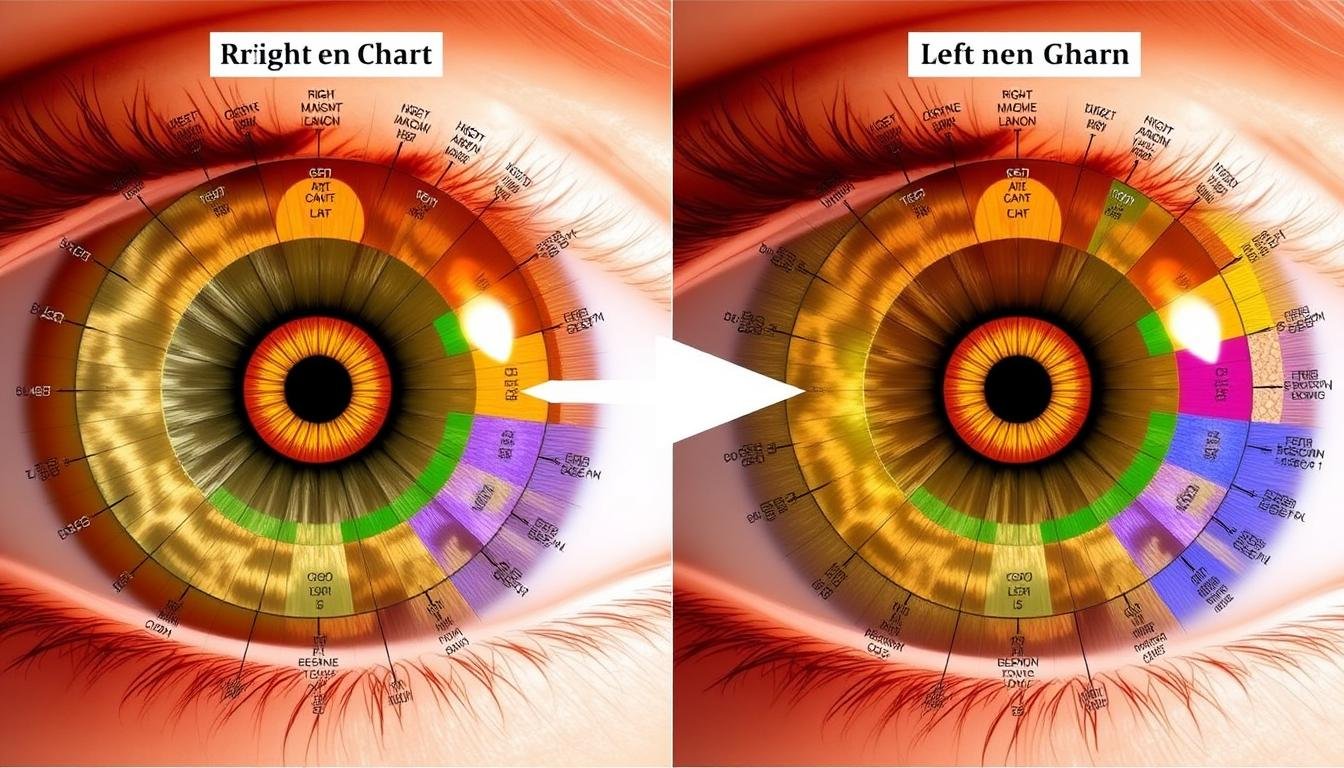
Comparative analysis of right vs. left iridology charts highlighting key differences in organ mapping
| Fonctionnalité |
Charge iridologique Eye droit |
Tableau de l'iridologie |
| Primary Body Side |
Right side of body |
Left side of body |
| Dominant Organ Systems |
Liver, gallbladder, ascending colon |
Heart, spleen, descending colon |
| Brain Hemisphere Connection |
Cerveau gauche (logique, analyse) |
Cerveau droit (créativité, intuition) |
| Emotional Indicators |
Stress patterns related to logical thinking, analytical stress |
Emotional patterns, creative blocks, intuitive stress |
| Digestive System Focus |
Upper digestive tract, liver function |
Lower digestive tract, elimination |
Zones Unique to Charge iridologique Eye droit
Several zones in the tableau d'iridologie oeil droit have unique significance that differs from the left eye chart. These distinctive areas provide specific insights into right-sided organs and systems:
- Liver Zone (3 o’clock): Uniquely prominent in the right eye, this zone reflects liver health, detoxification capacity, and metabolic function
- Gallbladder Zone (2-3 o’clock): Adjacent to the liver zone, this area indicates gallbladder function and bile production
- Ascending Colon (4-5 o’clock): This zone shows the health of the ascending portion of the large intestine
- Right Kidney (5-6 o’clock): Reflects the function and health of the right kidney
- Right Adrenal (5 o’clock): Indicates stress response and adrenal function on the right side
Download Your Free Iridology Chart
Get our comprehensive iridology reference chart showing detailed right and left eye comparisons. Perfect for practitioners and those interested in natural health assessment.
Télécharger le graphique gratuit
Health Indicators in Charge iridologique Eye droit
Le tableau d'iridologie oeil droit contains specific indicators that practitioners look for when assessing health. These markings and patterns can provide insights into potential health concerns:
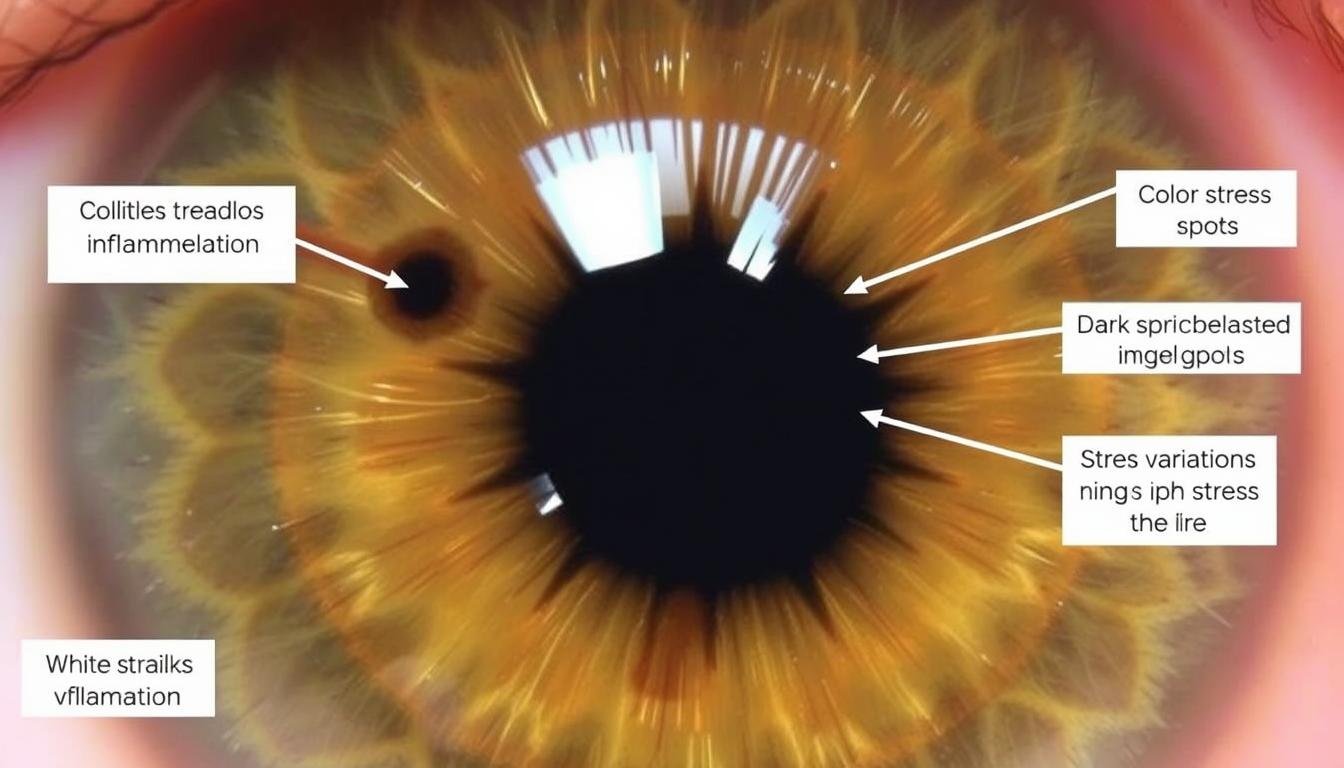
Common health indicators observed in right eye iris analysis with corresponding interpretations
Signes structurels
- Radial furrows indicating genetic predispositions
- Lacunae (enclosed spaces) suggesting inherent weaknesses
- Crypts showing potential genetic strengths
- Nerve rings indicating nervous system stress
Indicateurs de couleur
- Yellow tints suggesting potential liver stress
- White areas indicating inflammation or acute activity
- Dark spots showing areas of toxin accumulation
- Orange/brown areas indicating potential mineral deposits
Texture Changes
- Density variations showing tissue integrity
- Fiber separations indicating potential tissue weakness
- Raised areas suggesting hyperactivity
- Depressed areas showing potential underactivity
Études de cas : Charge iridologique Eye droit Analysis in Practice
To better understand how the tableau d'iridologie oeil droit is applied in practice, let’s examine three real-world case studies where right eye iridology analysis provided valuable insights.
Case Study 1: Liver Function Assessment
Profil du client: 42-year-old male with fatigue, digestive discomfort, and skin issues
Right Eye Observations: The practitioner noted significant markings in the liver zone (3 o’clock position) of the right iris, including yellowish discoloration and white stress lines.
Interprétation: These markings suggested potential liver stress and detoxification challenges, which aligned with the client’s symptoms.
Outcome: Based on the tableau d'iridologie oeil droit analysis, the practitioner recommended liver-supportive herbs, dietary changes, and detoxification protocols. After three months, the client reported improved energy, clearer skin, and better digestion.
Case Study 2: Digestive System Analysis
Profil du client: 35-year-old female with chronic constipation, bloating, and food sensitivities
Right Eye Observations: Analysis of the tableau d'iridologie oeil droit revealed dark spots in the ascending colon zone (4-5 o’clock) and structural changes in the small intestine area.
Interprétation: These markings indicated potential inflammation, toxin accumulation, and functional challenges in the digestive tract.
Outcome: The practitioner developed a protocol focusing on gut healing, including probiotics, digestive enzymes, and an elimination diet. Within six weeks, the client experienced significant improvement in digestive symptoms.
Case Study 3: Stress Response Patterns
Profil du client: 29-year-old professional with anxiety, sleep disturbances, and adrenal fatigue symptoms
Right Eye Observations: Le tableau d'iridologie oeil droit analysis showed prominent nerve rings (concentric circles) throughout the iris and specific markings in the adrenal zone (5 o’clock).
Interprétation: These patterns indicated chronic stress affecting the nervous system and potential adrenal exhaustion.
Outcome: Based on these findings, the practitioner recommended adaptogenic herbs, stress management techniques, and nervous system support. After two months, the client reported improved sleep quality, reduced anxiety, and better stress resilience.
Applications pratiques de Charge iridologique Eye droit Analyse
Comprendre le tableau d'iridologie oeil droit has numerous practical applications for both practitioners and individuals interested in holistic health assessment. Here’s how this knowledge can be applied:
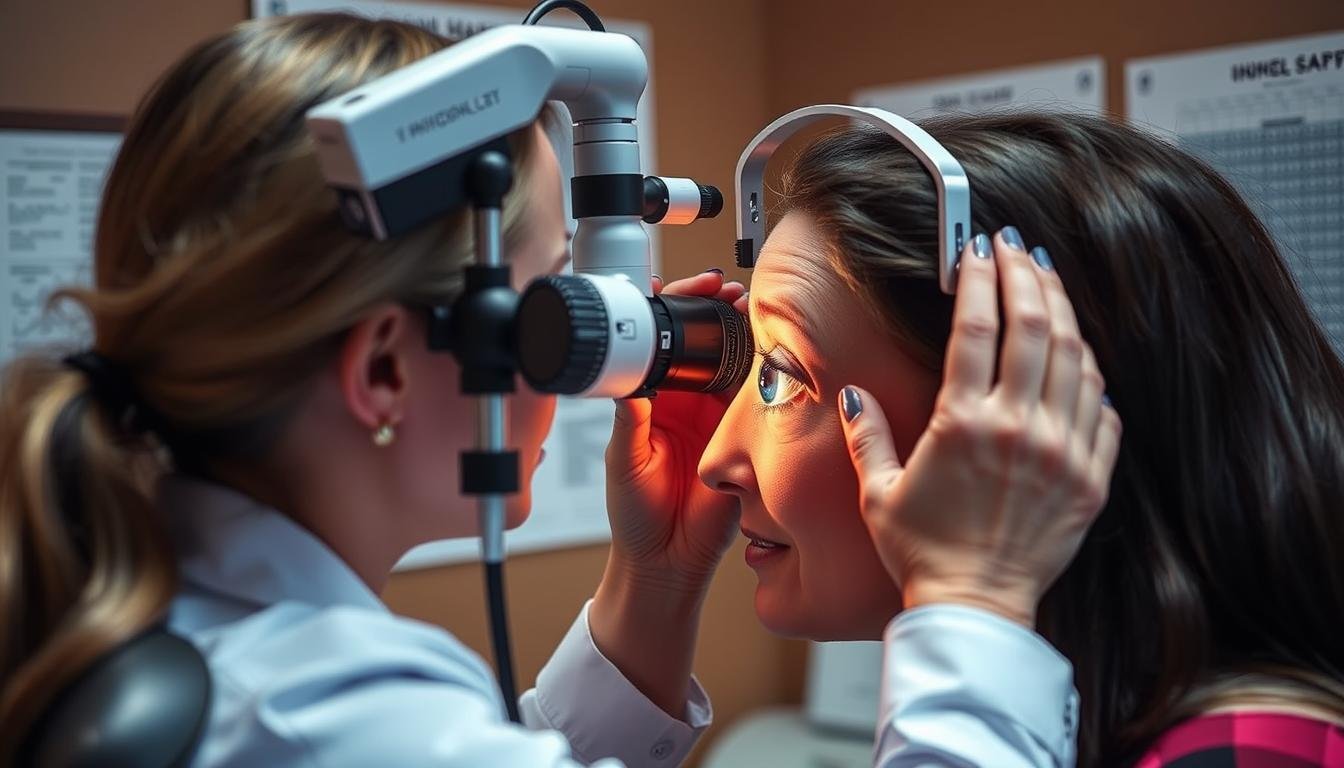
Professional iridologist conducting a right eye analysis using specialized equipment
For Health Practitioners
- Complementary assessment tool alongside other diagnostics
- Early detection of potential health imbalances
- Personalized protocol development based on constitutional types
- Monitoring client progress through iris changes
- Educational tool for client understanding and engagement
For Self-Assessment
- Greater awareness of personal health tendencies
- Identification of potential areas needing support
- Tracking of health improvements through iris changes
- Understanding constitutional strengths and weaknesses
- Motivation for proactive health practices
For Holistic Health Programs
- Customized nutrition plans based on iris constitution
- Targeted herbal protocols for specific iris markings
- Detoxification programs focused on indicated areas
- Stress management techniques for nervous system patterns
- Preventative approaches based on genetic predispositions
Step-by-Step Guide to Charge iridologique Eye droit Self-Assessment
While professional analysis is recommended for comprehensive evaluation, you can perform a basic self-assessment of your right eye using these steps:
- Gather the right tools: You’ll need a small flashlight, a magnifying mirror, and a basic tableau d'iridologie oeil droit reference.
- Create proper lighting: Stand in a well-lit area, preferably with natural light, facing a mirror.
- Position the flashlight: Hold the flashlight at about a 45-degree angle to your right eye, being careful not to shine it directly into your pupil.
- Observe the iris: Using the magnifying mirror, carefully examine the colors, patterns, and markings in your right iris.
- Compare with the chart: Reference your observations against an tableau d'iridologie oeil droit to identify potential areas of interest.
- Document your findings: Take notes or photos to track changes over time.
- Seek professional interpretation: For a thorough analysis, consult with a trained iridologist who can provide expert insights.
Get Your Professional Iridology Assessment Kit
Our comprehensive kit includes a professional-grade magnifier, detailed right and left eye charts, and a step-by-step guide for accurate iris analysis.
Shop Iridology Tools
Common Misinterpretations of Charge iridologique Eye droit
While iridology can provide valuable insights, there are several common misunderstandings and misinterpretations related to the tableau d'iridologie oeil droit that should be addressed:
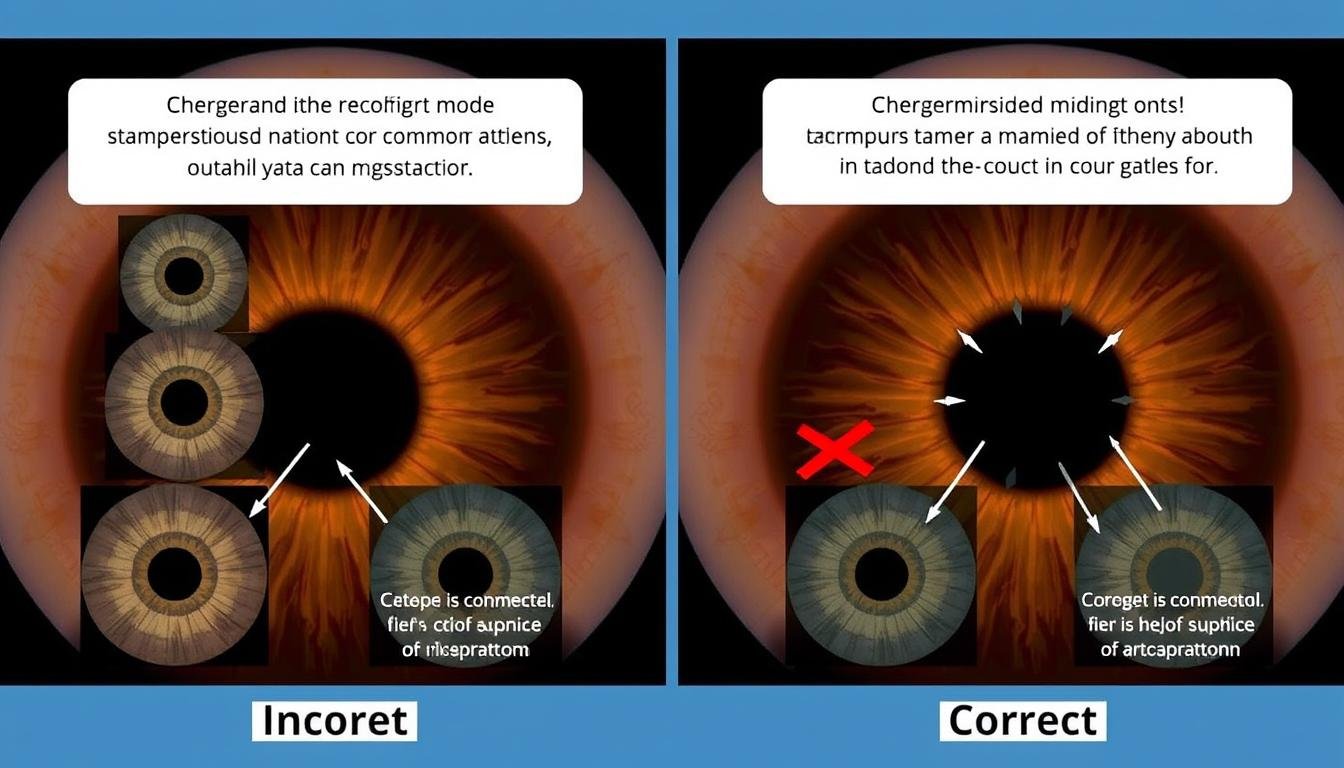
Comparison of correct versus incorrect interpretations of right eye iris markings
Accurate Understandings
- The right eye primarily reflects the right side of the body, with some exceptions
- Iris markings indicate tendencies and potential imbalances, not definitive diagnoses
- Iridology is most valuable as a complementary assessment tool
- Changes in the iris occur gradually over time
- Constitutional patterns remain relatively stable throughout life
Common Misinterpretations
- Assuming the right eye exclusively shows right-sided organs
- Interpreting iris markings as definitive disease diagnoses
- Expecting immediate iris changes after lifestyle modifications
- Relying solely on iridology without other health assessments
- Confusing normal iris features with pathological signs
Scientific Perspective on Charge iridologique Eye droit Analyse
It’s important to acknowledge the scientific perspective on iridology. While many practitioners report valuable clinical results using tableau d'iridologie oeil droit analysis, the scientific community maintains a skeptical stance due to limited clinical evidence supporting its diagnostic accuracy.
“Iridology should be viewed as a complementary assessment tool that may provide insights into constitutional tendencies and potential areas of weakness, rather than as a definitive diagnostic method. When used appropriately alongside conventional medical assessment, it can contribute to a holistic understanding of health.”
— Journal of Integrative Medicine Review
For those interested in iridology, it’s recommended to maintain a balanced perspective, using it as one of several tools for health assessment rather than as a standalone diagnostic method.
Foire aux questions sur Charge iridologique Eye droit
How does iridology chart right eye interpretation differ from left eye analysis?
Le tableau d'iridologie oeil droit primarily reflects organs and systems on the right side of the body, with special emphasis on the liver, gallbladder, ascending colon, and right kidney. It also connects to the left hemisphere of the brain, which governs logical thinking and analysis. In contrast, the left eye chart focuses more on the heart, spleen, descending colon, and left kidney, with connections to the right brain hemisphere associated with creativity and emotion.
Can the iridology chart right eye show specific diseases?
No, the tableau d'iridologie oeil droit cannot diagnose specific diseases. Rather, it shows constitutional tendencies, potential areas of weakness, and signs of tissue inflammation or toxicity. Iridology is best used as a tool to identify areas that may benefit from support, not as a diagnostic method for specific conditions. Always consult with healthcare professionals for proper medical diagnosis.
How often do iris patterns change in the right eye?
The basic constitutional patterns in the tableau d'iridologie oeil droit remain relatively stable throughout life. However, certain markings related to inflammation, stress, or toxicity can change gradually over time, usually over months or years. Acute conditions may show subtle changes in coloration or tissue density, but dramatic overnight changes are not expected in legitimate iridology.
What equipment do I need for proper right eye iridology analysis?
For professional analysis, practitioners typically use specialized equipment including a high-resolution iriscope or digital camera with macro lens capabilities, proper lighting, and comprehensive tableau d'iridologie oeil droit references. For basic self-observation, you can use a magnifying mirror (5-10x magnification), a small penlight, and a basic iridology chart. Professional assessment is recommended for accurate interpretation.
Can heterochromia (different colored eyes) affect iridology readings?
Yes, heterochromia (having differently colored eyes) can influence iridology readings. In such cases, each eye is analyzed according to its own constitutional type, with the tableau d'iridologie oeil droit still focusing on right-sided organs but with consideration for the specific iris type. The color difference may indicate genetic variations in how different body systems function.
Recommended Resources for Charge iridologique Eye droit Étude
For those interested in deepening their understanding of iridology and the tableau d'iridologie oeil droit, here are some valuable resources:
Books & Charts
- “Iridology Simplified” by Bernard Jensen
- “The Iridology Atlas” by Donald Bamer
- Rainbow IRIDOLOGY CHART of EYE Reflexology
- “La science et la pratique de l'iridologie” by Jensen & Bodeen
- Professional Laminated Right/Left Eye Charts
Digital Tools
- Iriscope Digital Cameras
- Iridology Analysis Software
- Mobile Apps for Basic Iris Analysis
- Online Courses with Digital Resources
- Virtual Consultation Platforms
Entraînement & Certification
- Association internationale des praticiens de l'iridologie
- Certified Iridologist Training Programs
- Workshops and Seminars
- Mentorship Programs
- Continuing Education Courses
Commencez votre voyage en iridologie aujourd'hui
Whether you’re a health practitioner looking to expand your skills or simply interested in natural health assessment, our comprehensive resources will help you master iridology chart analysis.
Conclusion: The Value of Charge iridologique Eye droit Analyse
The study of the tableau d'iridologie oeil droit offers a fascinating window into potential health patterns and constitutional tendencies. While it should not replace conventional medical diagnosis, it can serve as a valuable complementary tool for holistic health assessment.
By understanding the key differences between right and left eye iridology charts, practitioners and health enthusiasts can gain deeper insights into the body’s complex systems and their interconnections. The right eye’s unique focus on liver function, right-sided organs, and analytical brain processes provides specific information that complements the left eye’s different emphasis.
Whether you’re a professional practitioner or simply curious about alternative health approaches, developing skills in iridology chart interpretation can enhance your understanding of holistic health and provide another perspective on the body’s intricate balance. As with any health modality, approach iridology with an open but discerning mind, integrating its insights with other health assessment tools for a comprehensive view of wellbeing.

Professional iridology consultation providing personalized insights based on right eye analysis
















